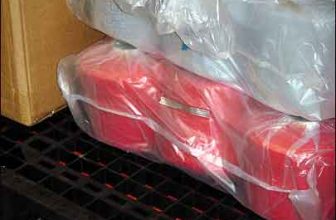
Application of RFID technology in Portuguese shoe store inventory management
[ad_1]
Fly London, a high-level shoe and accessories store, Avenida da Liberdade, Lisbon, Portugal, can provide customers with better service, not just trying on shoes. Thanks to RFID technology, customers can try on shoes and see the image of themselves wearing shoes in an opposite camera projection. However, this image will not only show the image of the customer wearing the shoes, but also show different backgrounds according to the style of the shoes, such as the street scenes of Tokyo, London or New York.
Ana Gomes, general manager of clothing brands Foreva and Fly London (owned by Portuguese footwear company Kyaia) stores, said our goal is to make customers have fun shopping. She explained that shopping at Fly London’s Lisbon store is no longer a simple shopping. For our customers, it has turned into a special and interesting experience.

In the Fly London store, RFID readers play a role
Although the interaction in the store is the most eye-catching feature of RFID deployment in the store, the main function of the RFID system is supply chain management, ensuring that store managers can know what inventory is available at any given time, what products are currently on sale in the store, and According to the sold products displayed by the RFID data, we can understand which products the store needs to order again. The entire solution was developed and installed by Creativesystems. This system is part of the Shoe ID project. It is led by Creativesystems. The R&D Institute Instituto de Engenharia de Sistemas e Computadores do Porto (INESC Porto) also participates in assisting in shoe shops and manufacturing. Supplier designs optimization algorithms for supply chain and production scheduling software.
Initially, the Fly London store used this system to track inventory, including the time the product left the manufacturer, the time it arrived at the 60-square-meter store, whether it was sold on the store, and the time it was sold.
The shoes sold in this shop are manufactured in a Portuguese factory operated by Kyaia. Once the shoes are manufactured, the factory workers attach a tag to the shoes. The tag contains Avery Dennison’s EPC Gen 2 passive ultra-high frequency (UHF) RFID inlay, and its unique ID number is in the Creativesystems software platform (CS.Retail) is connected with the information of the product’s inventory unit (SKU), style and size. All the shoes shipped to the Lisbon store are labeled.
The goods are shipped from the manufacturer to the Fly London store, and then store employees use a handheld ATID RFID reader to obtain the unique ID number of the shoe tag, which can be done directly through the closed shoe box. These handheld devices use Wi-Fi connections to forward the ID number to the CS.Retail software, indicating what merchandise has been received, thereby maintaining an inventory record of a store’s inventory. The software integrates the enterprise resource planning (ERP) system of the Fly London store to manage inventory tracking and orders.
When a pair of shoes is placed in the store, the fixed reader of Alien Technology installed on the ceiling reads the ID number of the RFID tag and sends it to the CS.Retail software, so that the store staff can know which ones at any time The goods are on sale.
The store has an interactive floor, 6 meters by 2 meters, with an Alien ALR9900+ RFID reader and built-in antenna. This floor was developed by Surfaceslab, a manufacturer of RFID doors.
When a customer puts on labeled shoes on the interactive floor, as long as the shoes touch the floor of the interactive floor, the antenna will obtain the unique ID number of the shoe tag. The antenna sends information to the store’s back-end system through a cable connection. The CS.Retail software receives the ID number. Then, the software determines which of the three backgrounds in London, New York or Tokyo to display based on the style of the shoes. The software instructs the video system (built on the interactive floor, connected to a camera and a flat screen) to display a suitable city street view and the image of the customer trying on shoes.
At the point of sale, the staff can enter the CS.Retail software to see that a labeled product has been purchased. Creativesystems also installed an Alien reader in the doorway to enable tags to be used in an electronic article surveillance (EAS) system. If shoes are taken out of the door without purchase, an alarm will be issued, otherwise no alarm will be issued.
The system was installed when the Fly London store opened on September 1st of this year. Gomes said: “So far, about 2,000 pairs of shoes have been labeled. At present, externally, we have received feedback from customers enjoying fun. Internally, we are managing the store in a more effective and faster way. We It is now many times faster to count inventory, and can simply control the transfer of all internal inventory.”
The project aims to determine whether RFID can be deployed in the footwear industry, from the manufacturing store to the point of sale. If the system works well, it may be installed not only in stores, but also in manufacturers and distribution centers.
[ad_2]




